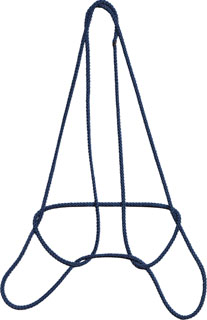| Adǔñ (a bat) | Yöruba String Figures — J. Parkinson 1906 p.134 | [9] |
| Pouch | Roth's Plates : 1902 — W. E. Roth (Jayne) 1906 p.376 | [12] |
| Iumbi (axe) | Ethnographic notes from the Congo Free State: an African miscellany — F. Starr 1909 p.158 | [14] |
| Nkongo (sickle) | Ethnographic notes from the Congo Free State: an African miscellany — F. Starr 1909 p.159 | [14] |
| Nameless | String Figures from New Caledonia and the Loyalty Islands — R. H. Compton 1919 p.213 | [28] |
| Wangga-ni-Viti (Fijian canoe) | String Figures from Fiji and Western Polynesia — J. Hornell 1927 p.22 | [42] |
| Ipu Sioata (drinking glass) | String Figures from Fiji and Western Polynesia — J. Hornell 1927 p.64 | [42] |
| Bakwa Giwa (the Tiger's Paw) | String Figures from Sierra Leone, Liberia and Zanzibar — J. Hornell 1930 p.108 | [49] |
| A Bat (Adan) | Some Nigerian String Figures — K. Haddon, H. A. Treleaven 1936 p.34 | [59] |
| Mwanzi (The Bellows) | Some String Figures from North East Angola — M. D. & L. S. B. Leakey 1949 p.9 | [71] |
| The Hawk | String Figures from Northern New Guinea — H. C. Maude, C. H. Wedgwood 1967 p.207 | [78] |
| Na Paraoa (Two Whales) | String Figures of the Tuamotus — K. P. Emory, H. C. Maude 1979 p.54 | [100] |
| Small Drum (Bubu) | String Figures from the Congo : Smith 1910 — C. C. K. Smith (BISFA 4) 1997 p.166 | [147-4] |


